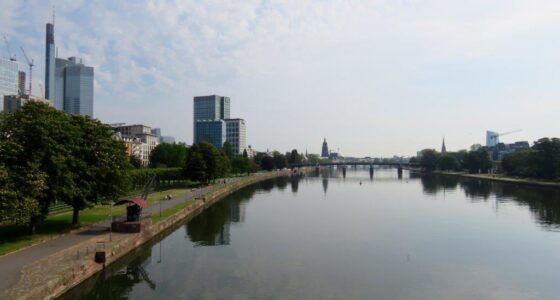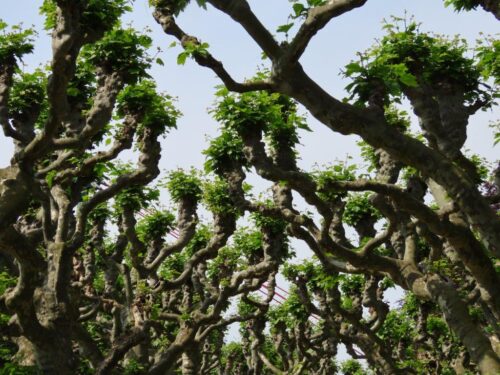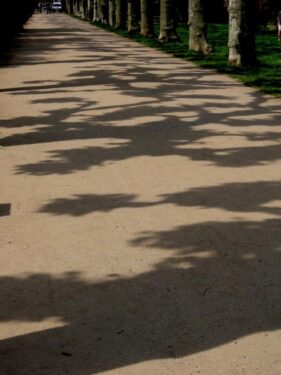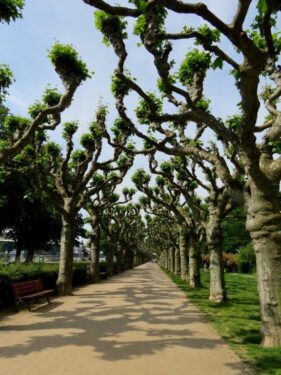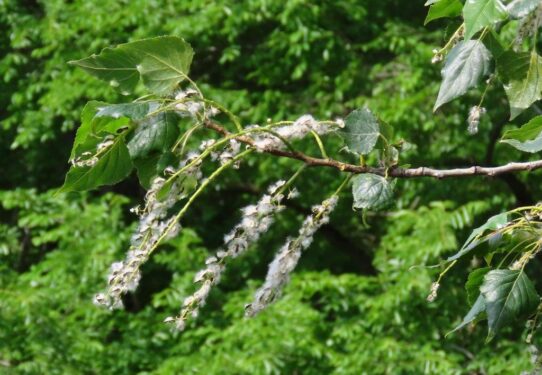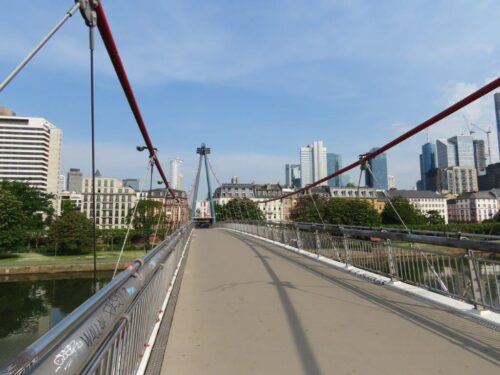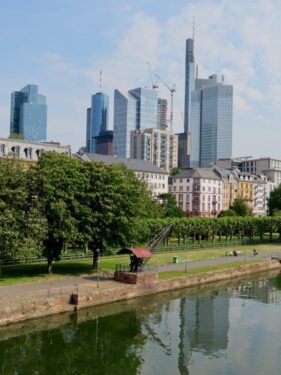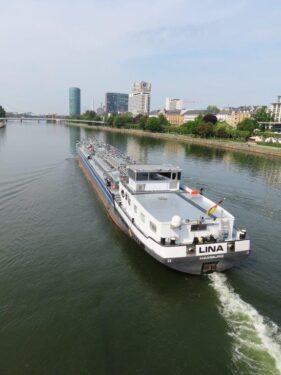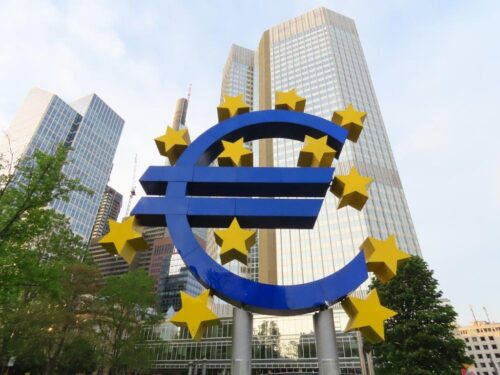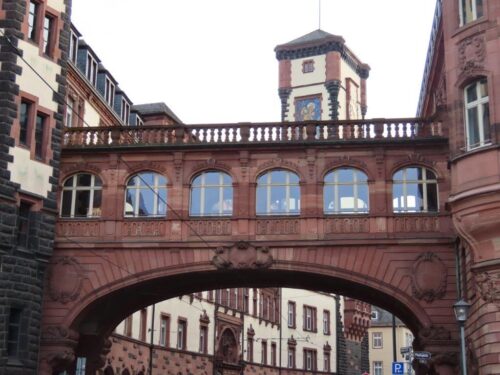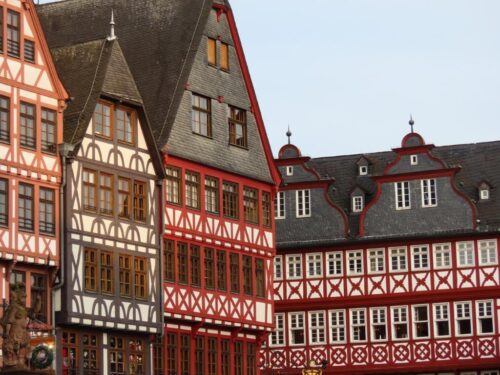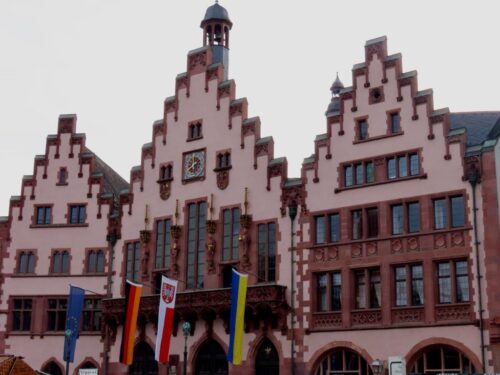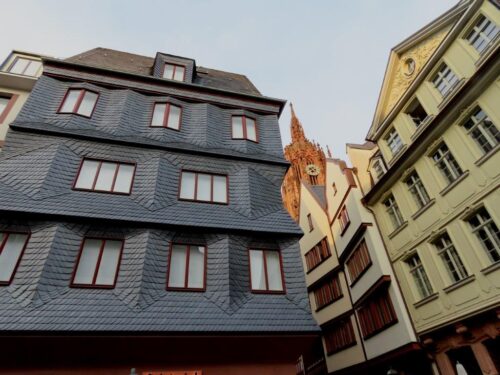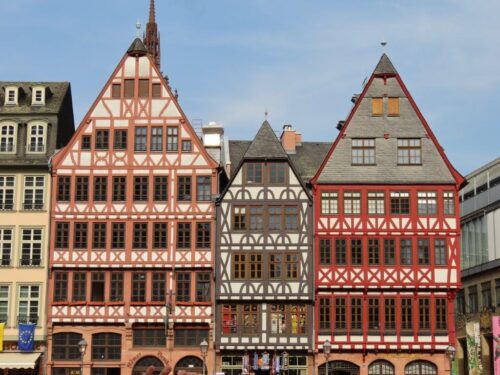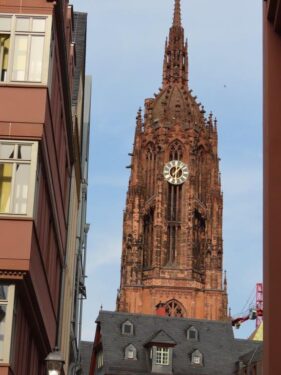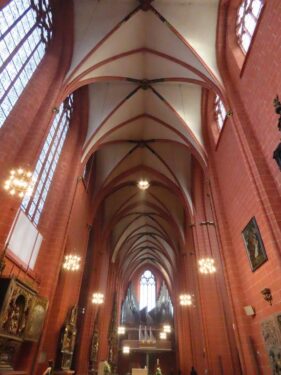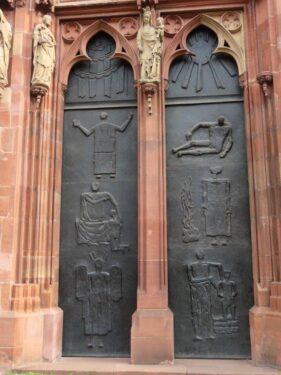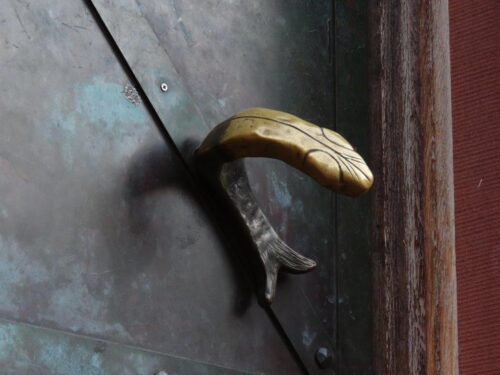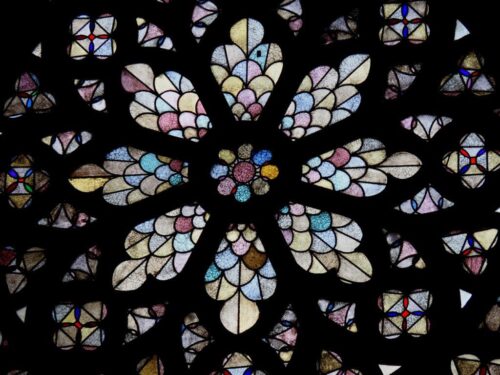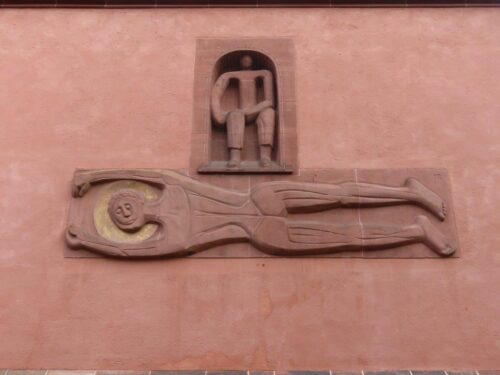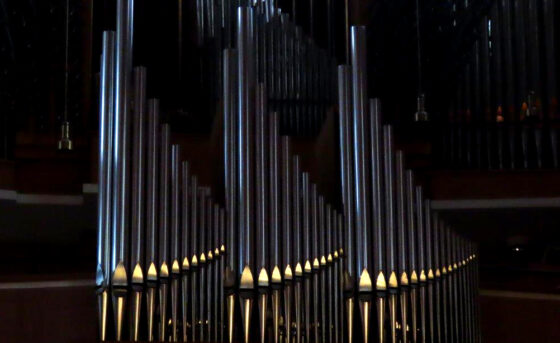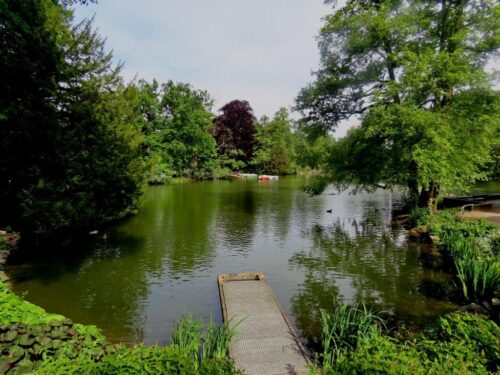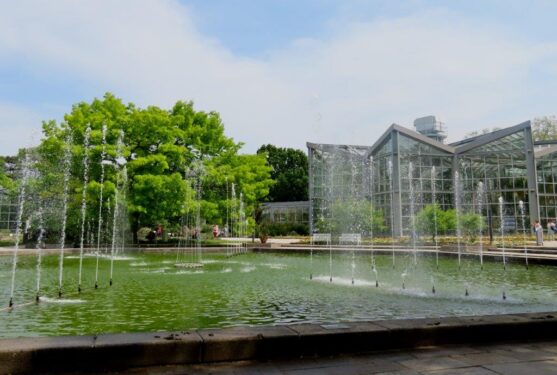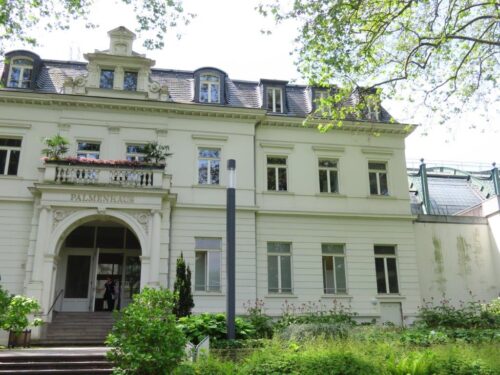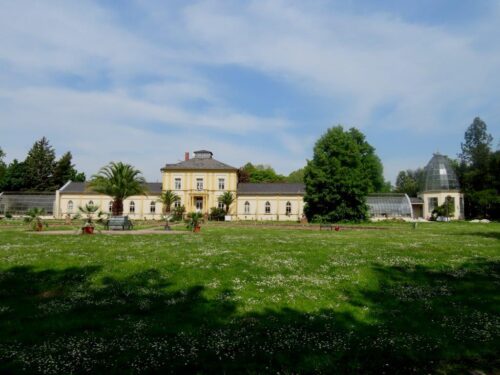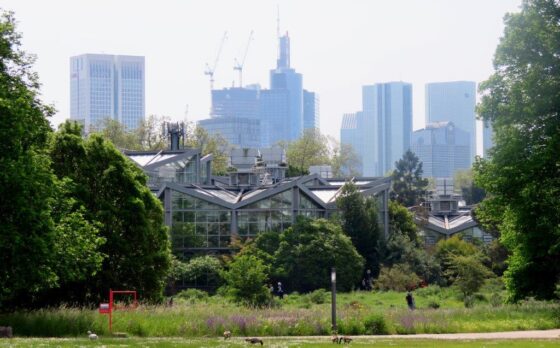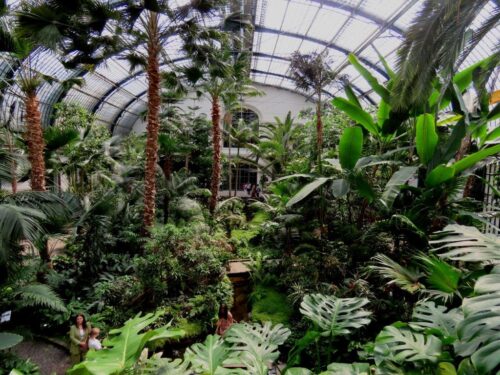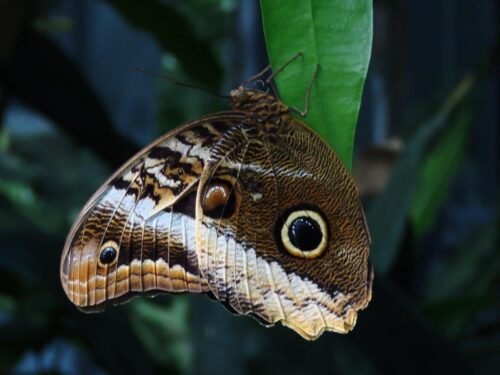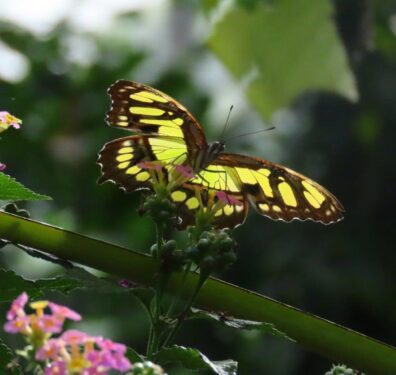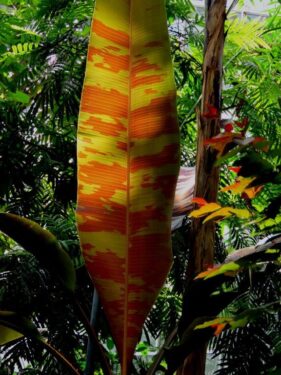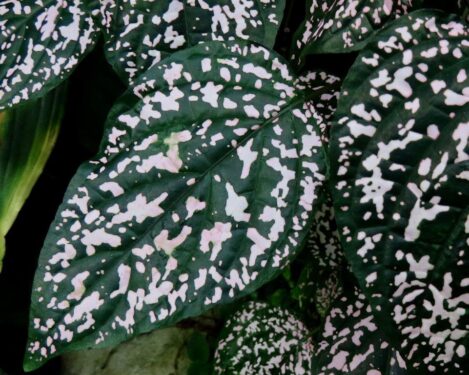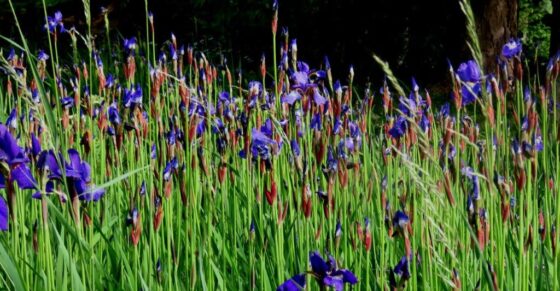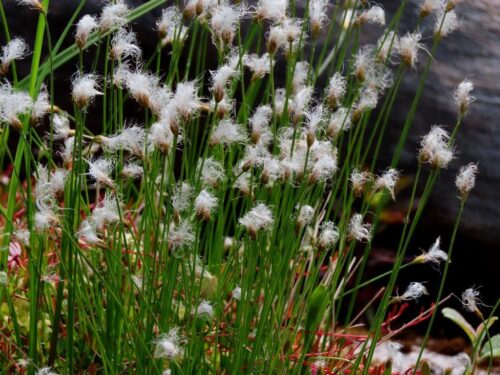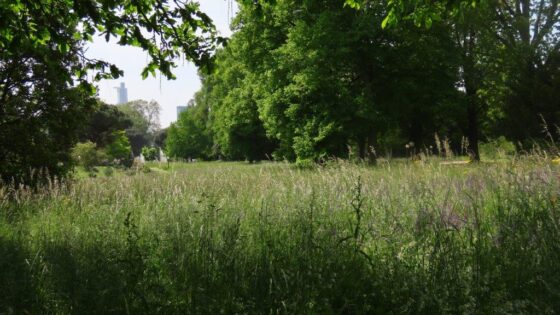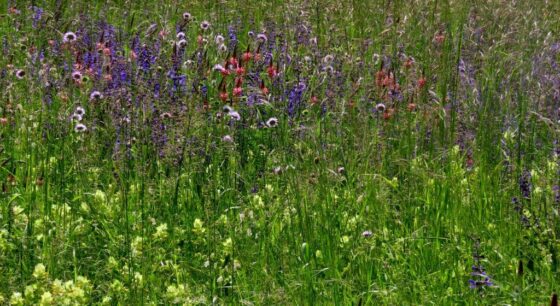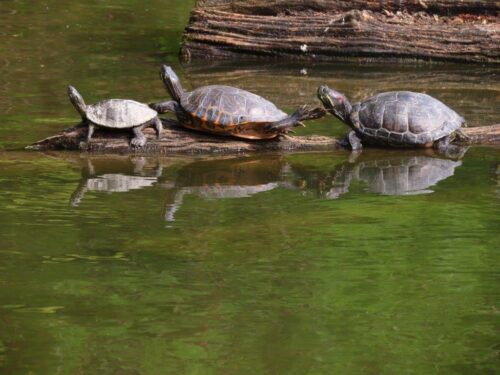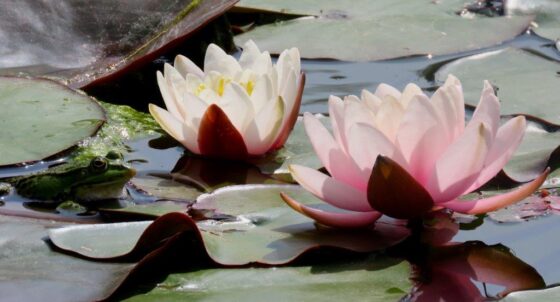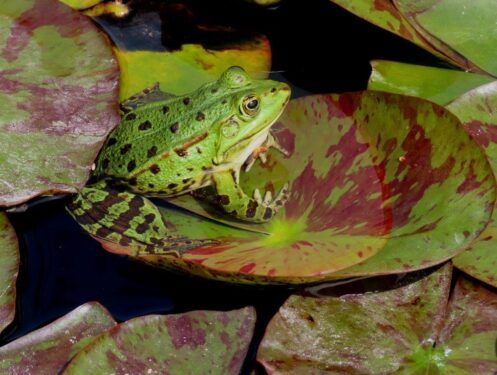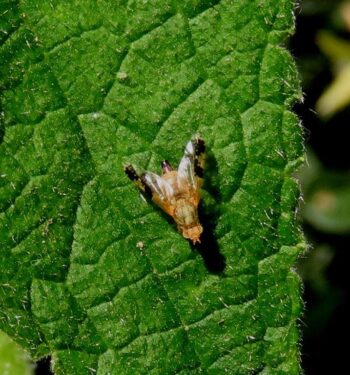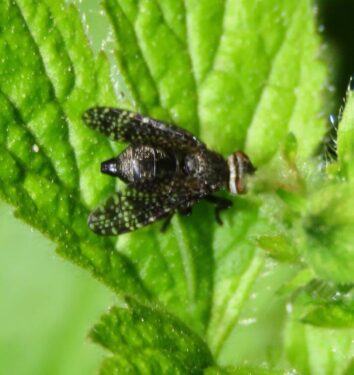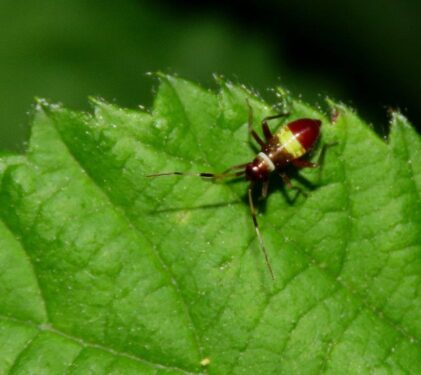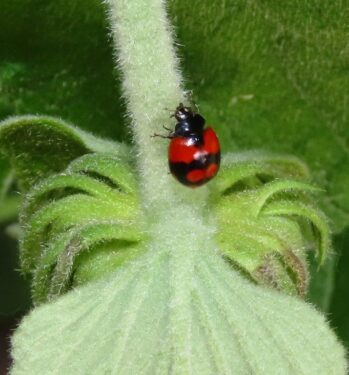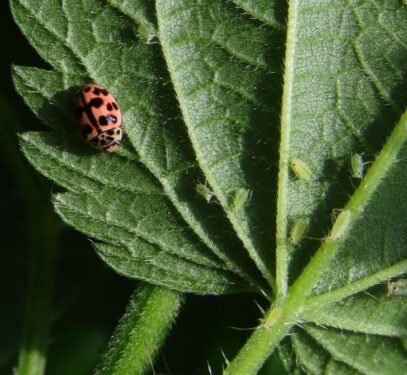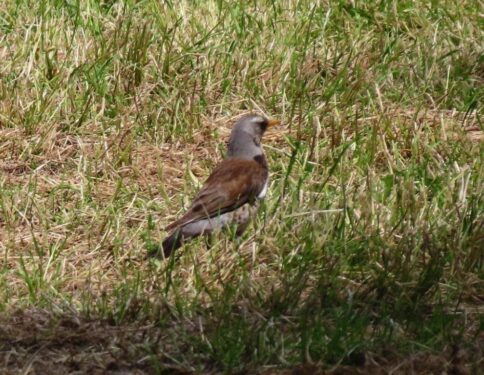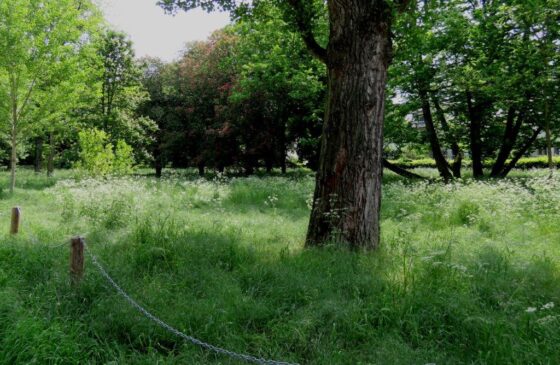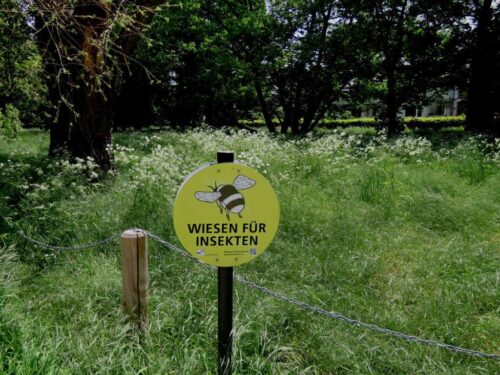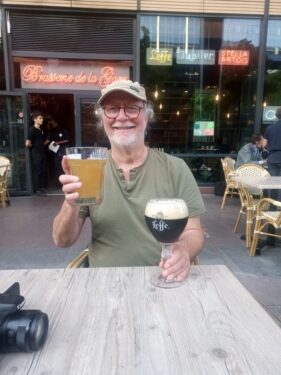There are a few calling points on the ICE trains between Regensburg and Brussels, but we thought for our first trip of this type we would stop over in the largest city, Frankfurt, for a couple of nights. Having travelled down the Rhine then up the Main on the way out, we had already had a snapshot of the riverine views, and once there, the pleasant river walks between lines of hydra-like Plane pollards and cotton-drifting Black Poplars casting some welcome shade gave good views of the economic powerhouse that is the city…
… an urban jungle with canyons of glass and steel which harboured (as expected) Peregrines, along with city-centre-dwelling Buzzards, and surprising densities of House Sparrows, along with hordes of screaming Swifts.
An evening in the ‘old’ city was eye-opening for the attention to detail that has evidently been given to its restoration after the area was flattened during WW2.
And even the cathedral, the red stone and its crisp edges and straight lines the product of its 1950s reconstruction. Almost a pastiche we thought at first, until we realised this in fact the third church on the site during its venerable 1500 year-old history: nothing stands still, not even buildings.
Then there is the organ, an object of pure architectural beauty, which one imagines will produce sounds to match…
Our day to the north of the city centre in and around the Palmengarten was a hot one! So much so that we were rather pleased one of our intended destinations, the Botanic Garden, was closed (another time maybe…).
Not dissimilar to Kew Gardens, this has extensive greenhouses coving a whole range of biomes, and a tropical butterfly house.
The outdoor gardens are many and varied, and full of interest to the botanist, even though the labelling is rather patchy and, sadly, all too often wrong.
One pleasing feature though is the extensive area of long grass, well signposted as being for wildlife (butterflies especially) alongside showier, less naturalistic, but still valuable prairie-style swards.
Around the lakes there were Terrapins, both the native European Pond and North American Red-eared species, while the smaller ornamental pools were full of Edible Frogs, their loud quacking choruses audible from a long range.
What seemed to be lacking, sadly, was insects not (presumably) as a result of pesticide use, more the weather. But as it warmed up, next door in the Gruneburg Park we found plenty.
Of particular interest were a ladybird Oenopia conglobata , which we have never seen before but is considered as a possible future colonist of the UK, and families of Fieldfares hopping around, something we see only in winter…
… and as seemingly everywhere in both Belgium and Germany, large tracts of recreational grass turned over to nature. What’s more, signposted accordingly!
And so it was back into Brussels, with a clear hour to get in a last Belgian beer in our favourite bar before the Eurostar home!
